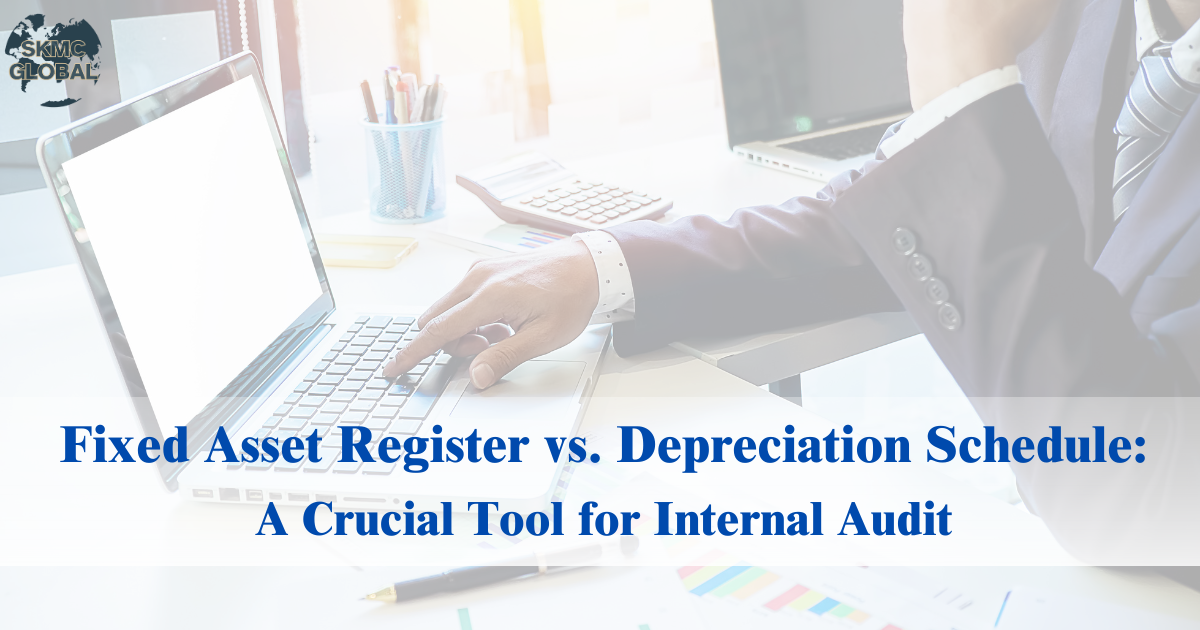
Introduction
During the current business cycle, the transparency of money and liquidity are both required for successful long-term development. With every organisation, whether big or small, in every business, comes the need to hold its cash receipts adequate enough to fulfill its short-term debts as well as long-term investment strategies. Of all the statements presented by accounts, the cash flow statement is most important. It presents the stakeholders with an undeniable portrait of how cash actually moves in the company, apart from the abstract notion of profit.
It has been placed under Section 2(40) of the Companies Act, 2013 that all such companies whose accounts are to be prepared in accordance with accounting standards are required to prepare a cash flow statement along with other such statements. The requirement itself shows the utmost importance of the need of preparing the cash flow statement from time to time for effective and smooth functioning.
This article tells us the reasons why being solvent, competitive, and credible is not merely a regulatory necessity but also a business imperative such that one can make a periodic cash flow statement.
What is a Cash Flow Statement?
A good place to start is to define: what is a cash flow statement?
Cash flow statement is an accounts statement that presents the inflow and outflow of cash and cash equivalents during an accounting period. It indicates how an enterprise generates cash from its operations, invests in its funds, and finances its operations. In other words, it gives answers to the biggest question: "Where did the money come from, and where did it go?"
The sole purpose of Cash flow statement is not just compliance rather it's an analysis tool which traps liquidity, solvency, and financial flexibility.
Elements of Cash Flow Statement
Elements of cash flow statement are classified under three major heads, as required under Accounting Standard (AS) 3 and Ind AS 7 – Statement of Cash Flows:
1. Operating Cash Flow – They comprise the routine transactions including customer payments, payments to vendors, wages, and tax payments. This is often a company's lifeblood.
2. Investing Cash Flow – They comprise purchasing or selling fixed assets, investment in shares, etc., and other capital outlays. These flows indicate how well a company performs in its re-investing of profits for expansion.
3. Cash Flow from Financing Activities – Examples include issue of shares proceeds, borrowing or repayment of loan, and dividend paid. This provides an insight into the financing of the entire operation by the company.
All such components of the cash flow statement collectively provide the target users with the right idea about the financial position of the business.
Statement of Cash Flow Statement – Periodical Necessity
A periodic cash flow statement provides dynamic details which cannot be depicted by a static balance sheet. Paper profit does not always reflect the availability of liquid money. For instance, credit sales revenue enhances profit but not the short-term liquidity.
Preparing the cash flow statement at periodical intervals (quarterly, half-yearly or annually) helps organisations to:
- Identify deficiencies beforehand.
- Service debt or working capital needs.
- Enable compliance with Section 129 of the Companies Act, 2013, in the form of true and fair accounting reporting.
Purpose of a Cash Flow Statement
The main purpose of Cash Flow Statement is being listed herewith as follows:
1. Liquidity Test – It verifies whether the company possesses adequate liquidity in order to meet its short-term commitments.
2. Investment Decision – It advises investors and management whether the company is making enough profits to expand.
3. Creditors' Confidence – Bankers, before lending money, study firm cash flow statement to understand their repayment ability.
Thus, use of the cash flow statement is synonymous with both external accountability and internal planning.
Role of Cash Flow Statement in Organisations
Role of cash flow statement cannot be denied. It is reality-check compared to mere accrual-based profit figures. Maintaining cash flow statement from time to time for firm has the following advantages:
1. Working Capital Tracking – Businesses survive on working capital and not on returns. Company's cash flow statement tells us whether there's sufficient liquid cash.
2. Investor Sentiment – Investors prefer companies with sound working capital cash inflows since it reflects sufficient long-term viability.
3. Operating Efficiency – Comparison of relative working capital inflows and outflows highlights operating working capital inefficiencies.
4. Law Compliance – Ind AS 7 mandates listed entities to present the nature of the cash flow statement through direct or indirect method.
The reason for cash flow statement, thus, is to bridge the gap between accounting profitability and actuality.
Types of Cash Flow Statement
While accounting concepts refer to the type of cash flow statement, they recognize two methods:
1. Direct Method – This method considers the gross cash receipts and payments. Cash receipts from customers and cash payments to suppliers, for instance, are reported under these captions.
2. Indirect Method – Begins with net profit and makes an adjustment for items which are not cash and in changes in working capital.
Both the two statements of cash flows reach the same net cash flow but the direct method provides more information.
Example for Cash Flow Statement
Let XYZ Pvt. Ltd.'s cash flow statement for the year FY 2024-25:
- Cash Flow from Operating Activities:
to Cash received from customers: ₹50,00,000
to Cash paid to suppliers: ₹35,00,000
to Operating expenses: ₹5,00,000
to Net Operating Cash Flow: ₹10,00,000
- Cash Flow from Investing Activities:
to Purchase of machinery: ₹7,00,000
to Sale of old equipment: ₹1,00,000
to Net Investing Cash Flow: (₹6,00,000)
- Cash Flow from Financing Activities:
to Loan raised: ₹5,00,000
to Dividend paid: ₹2,00,000
to Net Financing Cash Flow: ₹3,00,000
Net Cash Flow = ₹7,00,000
This simple cash flow statement for firm demonstrates how excess working capital funded investment and paid dividends such that the firm was liquidity sufficient.
Limitations Cash Flow Statement
For obvious reasons the Cashflow Statement is very helpful but still it carries some inherent limitations with it, such as:
1. Historical Nature – It is duplication of transactions in the past and cannot guarantee future cash receptions.
2. Exclusion of Non-Cash Items – Depreciation, though huge in accounting profit, is being excluded. This lowers aggregate financial monitoring.
Cash flow statement purpose thus cannot be replaced but usage alone is risky. It must be complemented with analysis of balance sheet and profit & loss.
Cash Flow Statement of Company – A Governance Perspective
Corporate governance structures of companies emphasize transparency. Regulators and SEBI mandate listed companies to make and submit company cash flow statement in annual reports.
Precedures of judiciary also mirror its significance. In Reliance Industries Ltd. v. SEBI (2018), tribunal has made it a condition to be filed in time the financial statements, i.e., statement of cash flow statement, to protect the interest of investors.
This does no more than add to the justification that company's cash flow statement is not an accounting requirement but a governance requirement.
Strategic Advantages of Periodic Statement of Cash Flow of Statement of Cash Flow
- Forecasting Ability: Future cash requirements can be forecasted by management by extrapolating from period trends.
- Credit Rating: Cash flow statements' strength is evaluated by agencies to rate corporate debt obligations. Satisfactory operating flows must lead to better ratings.
- Tax Planning: Working capital cash inflows and outflows can be measured by analyzing the firms with an emphasis of keeping tax outflows minimum under the Income-tax Act, 1961.
- Defence Legal: The company's cash flow statement under the Insolvency and Bankruptcy Code, 2016, is generally robust evidence of financial distress in case of insolvency.
Globally, investors and regulators demand preparation of cash flow statement on periodic intervals as a measure of transparency. Listed public firms in the United States of America have to file quarterly reports that necessarily include a full statement of cash flow statement. This not only helps to track the profitability of firms but also their underlying liquidity trends.
For instance, Apple Inc.'s annual report for 2023 revealed robust operating inflows of over $110 billion, depicting the manner frequent tracking of cash flow statement reports actually helps shape investor sentiment. Similarly, Infosys Ltd. in India releases company's cash flow statement every quarter so investors can see how well it is performing distributing dividends and investing in digital ones.
These figures point to a truer reality — such companies that have healthy, transparent, and consistent cash flow statement of company reporting are more valuable in the market and can readily get credit. This is proof that while regulation is compliance, best practice is embedding significance of cash flow statement as competitive advantage in the long run.
Conclusion
By way of summary, preparation of the statement of cash flows in good time is not a regulatory concern; it's a survival issue. It fills the gap between profitability and liquidity in such a way that businesses are best-equipped to meet their obligations, re-invest, and expand well.
With the awareness of what is the use of a cash flow statement, organizations and stakeholders are empowered to make decisions. Although putting the restriction on cash flow statement, there cannot be any argument that there isn't any other report that presents the actual liquidity position better.
As Ind AS 7 says: "Information about the cash flows of an entity is useful in providing users of financial statements with a basis to evaluate the entity's ability to generate cash and cash equivalents." Those seven words summarize why the intent of the cash flow statement exists.
With the current uncertain business environment, companies that take the time to prepare and update statement of cash flow statement on a monthly basis are not only law compliers but also effective, efficient, and trustworthy.
Recent Posts
-
 Incorporation of Company in UAE...
Dec 03,2025
Incorporation of Company in UAE...
Dec 03,2025
-
 Legal Entity Identifier LEI - Purpose and Applicab...
Dec 01,2025
Legal Entity Identifier LEI - Purpose and Applicab...
Dec 01,2025
-
 Implementation of New Labour Codes 2025...
Nov 29,2025
Implementation of New Labour Codes 2025...
Nov 29,2025
-
 A Step-by-Step Guide to a Smooth Payroll Outsourci...
Nov 28,2025
A Step-by-Step Guide to a Smooth Payroll Outsourci...
Nov 28,2025
-
 PESO Certification in India...
Nov 26,2025
PESO Certification in India...
Nov 26,2025
-
 Family Trusts for NRIs- Managing Indian Assets fro...
Nov 24,2025
Family Trusts for NRIs- Managing Indian Assets fro...
Nov 24,2025
-
 Decoding Disclosures: Section 184 of Companies Act...
Nov 21,2025
Decoding Disclosures: Section 184 of Companies Act...
Nov 21,2025
-
 All you want to know about Recycling business in I...
Nov 20,2025
All you want to know about Recycling business in I...
Nov 20,2025
-
 What is Seed Fund Scheme and its relevance for Sta...
Nov 19,2025
What is Seed Fund Scheme and its relevance for Sta...
Nov 19,2025
-
 Incorporation of Company in Singapore...
Nov 18,2025
Incorporation of Company in Singapore...
Nov 18,2025
-
 How to upgrade your AEO T2 certification to AEO T3...
Nov 15,2025
How to upgrade your AEO T2 certification to AEO T3...
Nov 15,2025
-
 What is the relevance of APEDA Registration and it...
Nov 14,2025
What is the relevance of APEDA Registration and it...
Nov 14,2025
-
 Applicability of Indian Accounting Standards for c...
Nov 11,2025
Applicability of Indian Accounting Standards for c...
Nov 11,2025
-
 Public vs. Private Trust: key Differences in Regis...
Oct 28,2025
Public vs. Private Trust: key Differences in Regis...
Oct 28,2025
-
 Donation and Foreign Contributions to Trusts in In...
Oct 23,2025
Donation and Foreign Contributions to Trusts in In...
Oct 23,2025
-
 Redeemable Preference Shares as a Financial Tool...
Oct 22,2025
Redeemable Preference Shares as a Financial Tool...
Oct 22,2025
-
 STPI Unit and Non-STPI Unit...
Oct 16,2025
STPI Unit and Non-STPI Unit...
Oct 16,2025
-
 Country-by-Country Reporting (CbCR) and Its Evolvi...
Oct 09,2025
Country-by-Country Reporting (CbCR) and Its Evolvi...
Oct 09,2025
-
 What is Free Trade Agreement and Certificate of Or...
Oct 08,2025
What is Free Trade Agreement and Certificate of Or...
Oct 08,2025
-
 What is the relevance of status holders certificat...
Oct 06,2025
What is the relevance of status holders certificat...
Oct 06,2025
-
 Redemption of Advance Authorization under Foreign ...
Oct 04,2025
Redemption of Advance Authorization under Foreign ...
Oct 04,2025
-
 What is provisional assessment of Bill of Entries ...
Sep 29,2025
What is provisional assessment of Bill of Entries ...
Sep 29,2025
-
 Redemption of EPCG License...
Sep 26,2025
Redemption of EPCG License...
Sep 26,2025
-
 MOOWR (Manufacturing and Other Operations in Wareh...
Sep 24,2025
MOOWR (Manufacturing and Other Operations in Wareh...
Sep 24,2025
-
 Procedure to Apply SCOMET License...
Sep 22,2025
Procedure to Apply SCOMET License...
Sep 22,2025
-
 Landscape of Semiconductor Industry while Doing Bu...
Sep 18,2025
Landscape of Semiconductor Industry while Doing Bu...
Sep 18,2025
-
 The Hidden Costs of In-House Accounting v/s Outsou...
Sep 17,2025
The Hidden Costs of In-House Accounting v/s Outsou...
Sep 17,2025
-
 TDS on sale of immovable property by an nri...
Sep 10,2025
TDS on sale of immovable property by an nri...
Sep 10,2025
-
 Setting up a Project Office in India...
Sep 08,2025
Setting up a Project Office in India...
Sep 08,2025
-
 Tax Implication for Transferring NRO Funds to NRE ...
Sep 05,2025
Tax Implication for Transferring NRO Funds to NRE ...
Sep 05,2025
-
 How outsourcing CFO services helps the corporates ...
Aug 27,2025
How outsourcing CFO services helps the corporates ...
Aug 27,2025
-
 Why a Periodical Cash Flow Statement is Necessary ...
Aug 26,2025
Why a Periodical Cash Flow Statement is Necessary ...
Aug 26,2025
-
 What is FATCA and CRS reporting and its difference...
Aug 22,2025
What is FATCA and CRS reporting and its difference...
Aug 22,2025
-
 What are unclaimed TDS Credits and how to claim it...
Aug 21,2025
What are unclaimed TDS Credits and how to claim it...
Aug 21,2025
-
 Digital Taxation is reshaping Tax Nexus Between Ju...
Aug 20,2025
Digital Taxation is reshaping Tax Nexus Between Ju...
Aug 20,2025
-
 Procedure to Take PF Registration and Its Complian...
Aug 18,2025
Procedure to Take PF Registration and Its Complian...
Aug 18,2025
-
 Procedure to take PSARA License...
Aug 11,2025
Procedure to take PSARA License...
Aug 11,2025
-
 Mandatory factory license while setting up manufac...
Aug 08,2025
Mandatory factory license while setting up manufac...
Aug 08,2025
-
 Procedure for obtaining NBFC Registration in India...
Aug 04,2025
Procedure for obtaining NBFC Registration in India...
Aug 04,2025
-
 FSSAI License registration for Food Business...
Jul 14,2025
FSSAI License registration for Food Business...
Jul 14,2025
-
 How Management Information System (MIS) reporting ...
Jul 11,2025
How Management Information System (MIS) reporting ...
Jul 11,2025
-
 IFRS 9 impairment- A complete guide...
Jul 12,2025
IFRS 9 impairment- A complete guide...
Jul 12,2025
-
 Why most of the companies are shifting to hr and p...
Jul 10,2025
Why most of the companies are shifting to hr and p...
Jul 10,2025
-
 A complete guide on valuation of shares...
Jul 10,2025
A complete guide on valuation of shares...
Jul 10,2025
-
 BIS registration for foreign manufacturer...
Jul 09,2025
BIS registration for foreign manufacturer...
Jul 09,2025
-
 Understanding the Scope of the Shops and Establish...
Jul 08,2025
Understanding the Scope of the Shops and Establish...
Jul 08,2025
-
 Coso framework: Complete guide on internal control...
Jun 26,2025
Coso framework: Complete guide on internal control...
Jun 26,2025
-
 Components and Process for Conducting Internal Aud...
Jun 25,2025
Components and Process for Conducting Internal Aud...
Jun 25,2025
-
 What is ICFR and Why It is Important for Businesse...
Jun 24,2025
What is ICFR and Why It is Important for Businesse...
Jun 24,2025
-
 Understanding WPC Certification and its applicabil...
Jun 23,2025
Understanding WPC Certification and its applicabil...
Jun 23,2025
-
 Procedure to take EPR registration for battery was...
Jun 21,2025
Procedure to take EPR registration for battery was...
Jun 21,2025
-
 3PL Logistics...
Jun 19,2025
3PL Logistics...
Jun 19,2025
-
 What is E-Waste and role of EPR in Waste Managemen...
Jun 17,2025
What is E-Waste and role of EPR in Waste Managemen...
Jun 17,2025
-
 M&A Due Diligence in India: How to Spot Target Com...
Jun 16,2025
M&A Due Diligence in India: How to Spot Target Com...
Jun 16,2025
-
 BIS crs certification for electronic products...
Jun 12,2025
BIS crs certification for electronic products...
Jun 12,2025
-
 All you need to know about WPC ETA certification f...
Jun 11,2025
All you need to know about WPC ETA certification f...
Jun 11,2025
-
 What is CDSCO Registration under The Drugs & Cosme...
Jun 10,2025
What is CDSCO Registration under The Drugs & Cosme...
Jun 10,2025
-
 Procedure to Take CDSCO Registration in India: A C...
Jun 09,2025
Procedure to Take CDSCO Registration in India: A C...
Jun 09,2025
-
 All You Need to Know About AERB Registration...
Jun 07,2025
All You Need to Know About AERB Registration...
Jun 07,2025
-
 Understanding POSH (Prevention of Sexual Harassmen...
Jun 03,2025
Understanding POSH (Prevention of Sexual Harassmen...
Jun 03,2025
-
 Chartered Accountant's role in financial managemen...
May 23,2025
Chartered Accountant's role in financial managemen...
May 23,2025
-
 5 Things to keep in mind while running your payrol...
May 17,2025
5 Things to keep in mind while running your payrol...
May 17,2025
-
 Why BIS Certification is Crucial for Importers and...
May 15,2025
Why BIS Certification is Crucial for Importers and...
May 15,2025
-
 Top 7 Reasons Indian Entrepreneurs Are Switching t...
May 07,2025
Top 7 Reasons Indian Entrepreneurs Are Switching t...
May 07,2025
-
 Incorporation of Company in Japan...
Apr 24,2025
Incorporation of Company in Japan...
Apr 24,2025
-
 How to set up a Representative Office in Singapore...
Apr 14,2025
How to set up a Representative Office in Singapore...
Apr 14,2025
-
 BIS certificate for medical equipments...
Apr 09,2025
BIS certificate for medical equipments...
Apr 09,2025
-
 Fixed Asset Register v/s Depreciation Schedule: A ...
Apr 02,2025
Fixed Asset Register v/s Depreciation Schedule: A ...
Apr 02,2025
-
 Role of AI in Accounting...
Mar 26,2025
Role of AI in Accounting...
Mar 26,2025
-
 Capital Structure & its Impact on Profitability...
Feb 21,2025
Capital Structure & its Impact on Profitability...
Feb 21,2025
-
 Union Budget 2025...
Feb 01,2025
Union Budget 2025...
Feb 01,2025
-
 What is EPR in Plastic waste Management? ...
Jul 12,2022
What is EPR in Plastic waste Management? ...
Jul 12,2022
-
 Lithium-ion Battery Recycling Plant Setup in India...
May 10,2022
Lithium-ion Battery Recycling Plant Setup in India...
May 10,2022
-
 Setting up E-waste Recycling Plant Setup...
Jan 12,2022
Setting up E-waste Recycling Plant Setup...
Jan 12,2022
-
 Applicability of Labour Laws in India...
Jul 15,2021
Applicability of Labour Laws in India...
Jul 15,2021
-
 Basis to Outsource Finance and Accounting Services...
Oct 31,2021
Basis to Outsource Finance and Accounting Services...
Oct 31,2021
